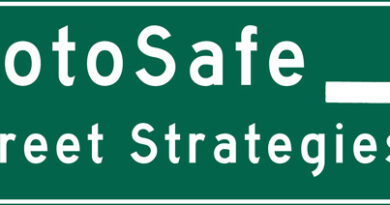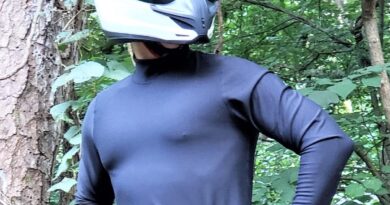Street Strategies: Are we really better drivers because of our sport?
“Motorcyclists are 23% safer behind the wheel of a car than non-motorcyclists, according to a leading insurer.” –visordown.com
An interesting statement, but is it true? If so, does it make sense? As we ride our bikes, we have different and greater challenges than a car drivers faces. For one, we face far more risk than a car driver does. Our chosen sport is fraught with risk; we are smaller and lighter than other vehicles on the road, we are practically invisible to those cars or trucks with whom we share the road, and we can become lost in the flow of traffic around us. When we come to a stop, unlike a car, we must put our feet down to balance the bike. The car driver simply steps on the brakes. Finally, we don’t have a cage of metal, plastic, airbags and crumple zones around us – only the clothes, helmets and other gear we wear.

Two words encompass what we have to protect us and keep us safe: skills and strategies. We ofter forget they are two very different – but related – things. Skills are both physical and mental; we build them over time and with practice. Before we can say we have a skill, we need to learn it and practice it until it becomes an integral part of our skillset. The simple physical skill of cornering is an example. One of the most common causes of accidents for novice riders is the failure to negotiate a curve. They have not learned the physical skill of cornering yet. We teach them the basics of cornering in the Basic Rider Course, but practice, practice, practice and more training build the skill.
When a novice student passes the skills test and leaves our course, we often tell them that they are now qualified to ride in a parking lot. We suggest that before they take their bike on main streets, they practice their riding on the streets around their home to build their skills.
Physical skills are not the only ones they need to build. In the classroom section of the Basic Rider Course, we teach mental skills as well. Again, these are part of the skill set they need to ride safely. They are referred to as Street Strategies, and they are mental skills that need to be learned and practiced. While physical skills help you react to situations, mental skills and strategies give you the ability to respond to situations.
Going back to the example of cornering, the novice may learn the physical skill of cornering: slow, look, press and roll. This gives them an outside-inside-outside path of travel. Link several corners together, and they need to rely on mental skills to plan their path. This only comes from practice and continual skill development.
We need to build and practice those Street Strategies and integrate them into our normal, everyday riding. David L. Hough coined the term “Street Strategies” in the 1970s to cover suggestions and hints he wrote about on how to handle various riding situations. They were picked up by the MSF and incorporated into various training courses. (Editor’s Note: Mr. Hough now denounces the MSF and its training courses; see this article for his reasons why.) A definition might be the mindset (attitudes) and search strategies you use as you ride. These include how you search, your spacing and positioning in traffic, understanding your risks at all times, the timing method you use to give you time and space between you and potential hazards, and more.
We introduce Street Strategies in the Basic Rider Course, first talking about risk and later introducing the SEE (Search, Evaluate, Execute) or SIPDE (Scan, Identify, Predict, Decide, Execute) strategies. The key to both is building a habit of continuously searching for hazards, evaluating those hazards, predicting and planning how best to avoid the hazards, and then executing the plan. This works to help identify traps or common situations that can turn dangerous for motorcyclists. Often we find these strategies are quickly picked up by the students. Hearing from students who report that after the Street Strategies section of the classroom, they become more aware just driving home or while taking their lunch break.
Good riders find that by practicing these strategies each time they get on the bike, they become second nature – and so much so that they find the skills being used all the time, even when driving a car. Think about the last time you drove a car. Did you talk on your cell phone or did you devote all your attention to driving? Now think about the last time you rode your motorcycle. Did you allow yourself to be distracted or did you devote all your attention to riding?
As you drive your car, do you find yourself watching not only the car ahead of you, but also the cars ahead of that car? As you drive into a curve, do you consider your path through the curve and maybe even what’s beyond the curve? Do you often find yourself thinking as you drive your car how you would take a corner on your bike? These are just some of the traits of a safe motorcyclist, some of the mental skills we use each time we throw our leg over that bike and hit the starter.
The article referenced above talks about motorcyclists who drive cars being 23 percent safer. You can probably answer better than I if this applies to all motorcyclists, but I often see riders who don’t demonstrate good street strategy skills. They follow too close, weave in and out of traffic, or they’re simply not aware of the traffic around them. My own view is that 23 percent represents only those motorcyclists who have truly integrated the street strategies into their normal daily behavior. These things have become second nature whether they’re on a bike or in a car.
This happens in several ways, including these three simple actions that will begin to build your behavior towards being one of the 23 percent.
- Increase your following distance. The MSF uses the 2-4-12 rule: two seconds following, four seconds immediate path, 12 seconds anticipated path), so instead, increase your following distance to three or even four seconds.
- Think about what is around you; is there a car beside you on the freeway? Can you increase your speed or slow down to give yourself more room?
- Plan your route – know when you need to move over and what lane you need to be in to exit or maneuver.
When I introduce the concept of increasing following distance, students often comment that it only gives other vehicles the ability to cut in front of them. My response is “So let them!” Back off and keep your 3-4 second following distance. The benefits of this strategy are apparent to me:
- By keeping my following distance greater than two seconds, I am better able to see what is happening farther down the road and respond to those situations. That way I’m not simply reacting to a sudden brake light in front of me.
- The cars behind me quickly realize I do not have to brake a lot in heavy traffic and back off from me.
- I find my trip much more relaxed and less stressful.
Remember, while we have some big risks in riding, we do have some important advantages over cars. We are lighter and smaller, but we have agility and power-to-weight ratios on our side. We can only use these advantages if we have the mental skills to recognize hazards and plan actions to avoid them. Building our mental skills and street strategies will carry through to other areas – like the next time you get behind the wheel of your cage.
Originally published in BMW Owners News in March 2014.



